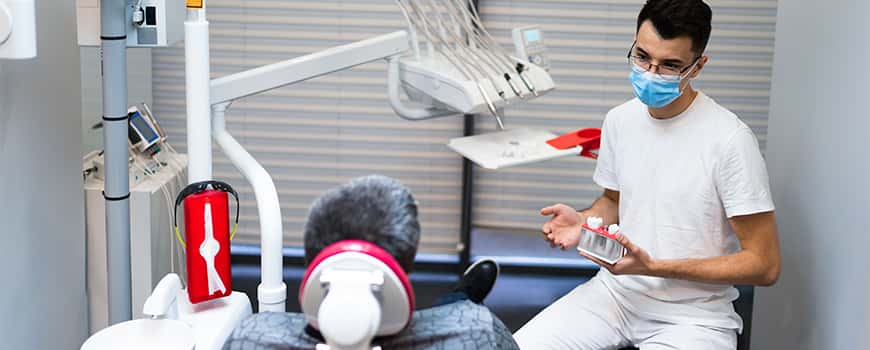Implant Prostheses in 6 Questions
Salih ÖNDER2022-09-06T21:31:56+03:00What is the difference between zirconium-porcelain crowns on implants and metal-porcelain crowns?
Among all the materials used for aesthetic purposes in fixed prostheses, porcelain is the material with the best color harmony with the natural tooth. Porcelain crowns are prepared as metal substructure or full porcelain (porcelain without metal support). However, reinforced ceramic substructures are used instead of metal substructures in order to increase the durability of full porcelain crowns and bridges. The most popular system used today is ceramic restorations reinforced with zirconia.
Ceramic restorations with zirconium-based implants have become more preferred today, due to the better aesthetics and superior aesthetic properties of biological jewellery, when compared to metal-supported ceramic restorations. Not using the metal infrastructure has largely prevented the emergence of allergic and toxic reactions as a result of ion release.
How long do zirconium-on-implant porcelain crowns last?
In zirconium-porcelain crowns on implants, the zirconia substructure is a material with the least metal hardness and durability. Zirconium easily resists strong loads due to its mechanical properties. Therefore, it is a long-lasting substance.
Are zirconium – porcelain crowns durable? Can it be applied to the back teeth?
All-ceramic crowns were initially used on single-member crowns and three-member posterior bridges. However, due to the fragile nature of porcelain, different methods have been developed to increase the durability of all-ceramic systems. With the introduction of zirconia into dentistry, a durable infrastructure was provided. Zirconium is a durable material, it can be easily used in back teeth and long bridges where strong chewing forces come from due to its mechanical properties.
Why should we choose an over-implant zirconium porcelain crown?
Zirconium porcelain has a light transmittance similar to that of natural teeth, so it is extremely aesthetic. Since there is no metal reflection underneath, the artificial image seen in porcelain with metal infrastructure does not occur. It is extremely resistant to high temperatures and impacts. Gingival compatibility is very good. Gingival discolorations, which are frequently seen in metal-based porcelains, are definitely not visible in zirconium.
It is a tissue-friendly material. Local and systemic reactions to this material have not been reported. There are no problems such as metal allergy. Its thermal conductivity is very low. They do not conduct heat like metal. There is no sensitivity to hot cold. It is a healthy material that does not cause taste disorders, gum problems and bad breath in the mouth.
For these reasons, zirconium is a material that achieves the highest performance achieved so far in terms of aesthetics, durability, tissue compatibility and naturalness, which are the basic requirements of dentistry. In restorations on implants, we prefer zirconium-based porcelains because they are aesthetic enough to be used on anterior teeth and durable enough to be used on posterior teeth.
Are there risks with a zirconium porcelain crown on an implant? If so, what are they?
In cases where the distance between the jaws is insufficient, the durability of the restoration decreases under chewing forces; In this case, it is risky to use in people with covert bite, teeth grinding, excessive clenching of their jaws, and people who have the habit of biting a pencil.
Is it more expensive than other implant overlays?
Implant-top zirconium porcelain crowns are produced with computer-aided devices with CAD/CAM technology. It is cut and shaped by computer from zirconium blocks by means of milling systems without human touch. This is a very delicate and long-term process. Over-implant zirconium infrastructure is slightly more expensive due to the use of this technology.
Bagcilar Hospitadent
Oral, Dental and Maxillofacial Surgeon Specialist
Dr. Kanber CAMBEROĞLU

